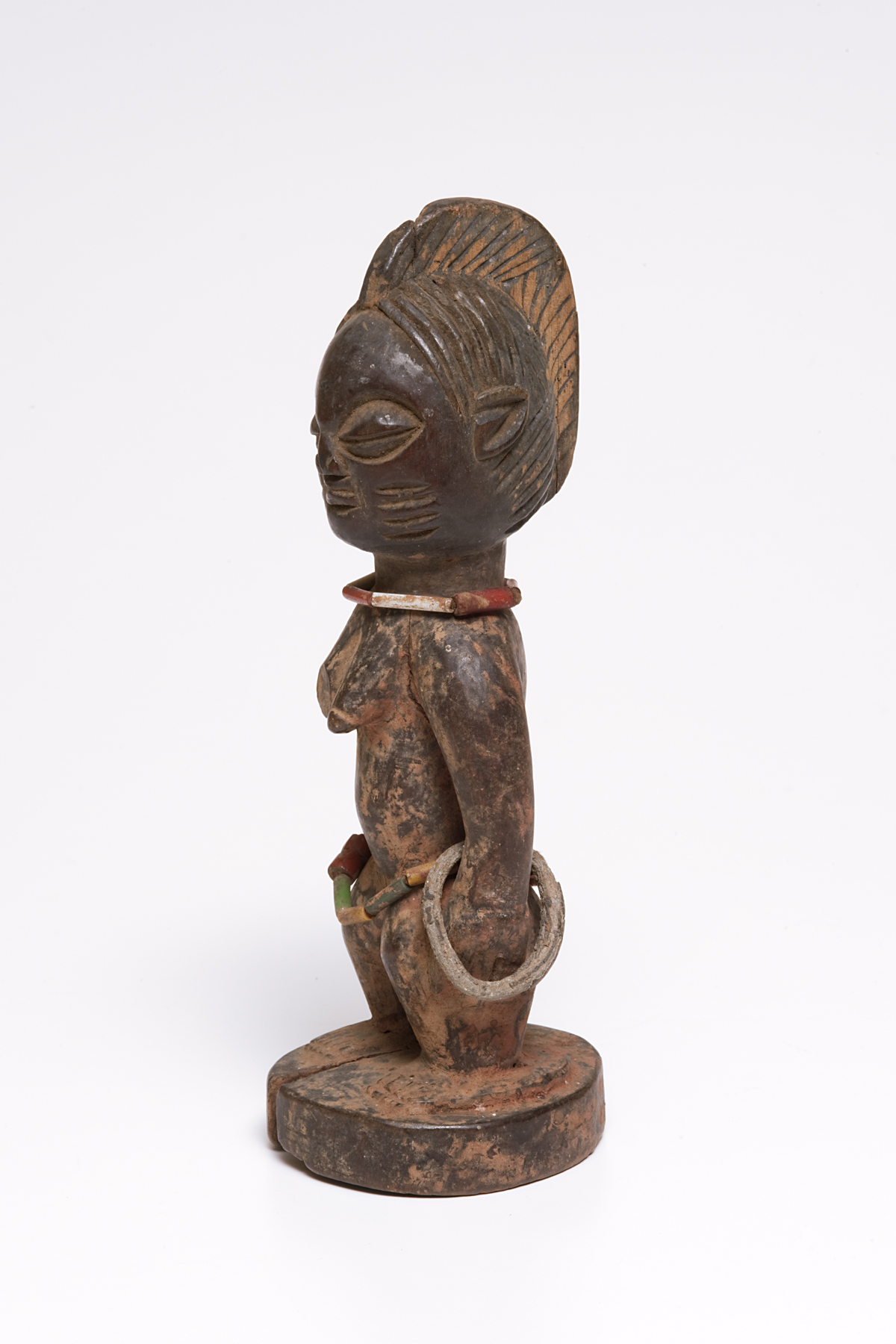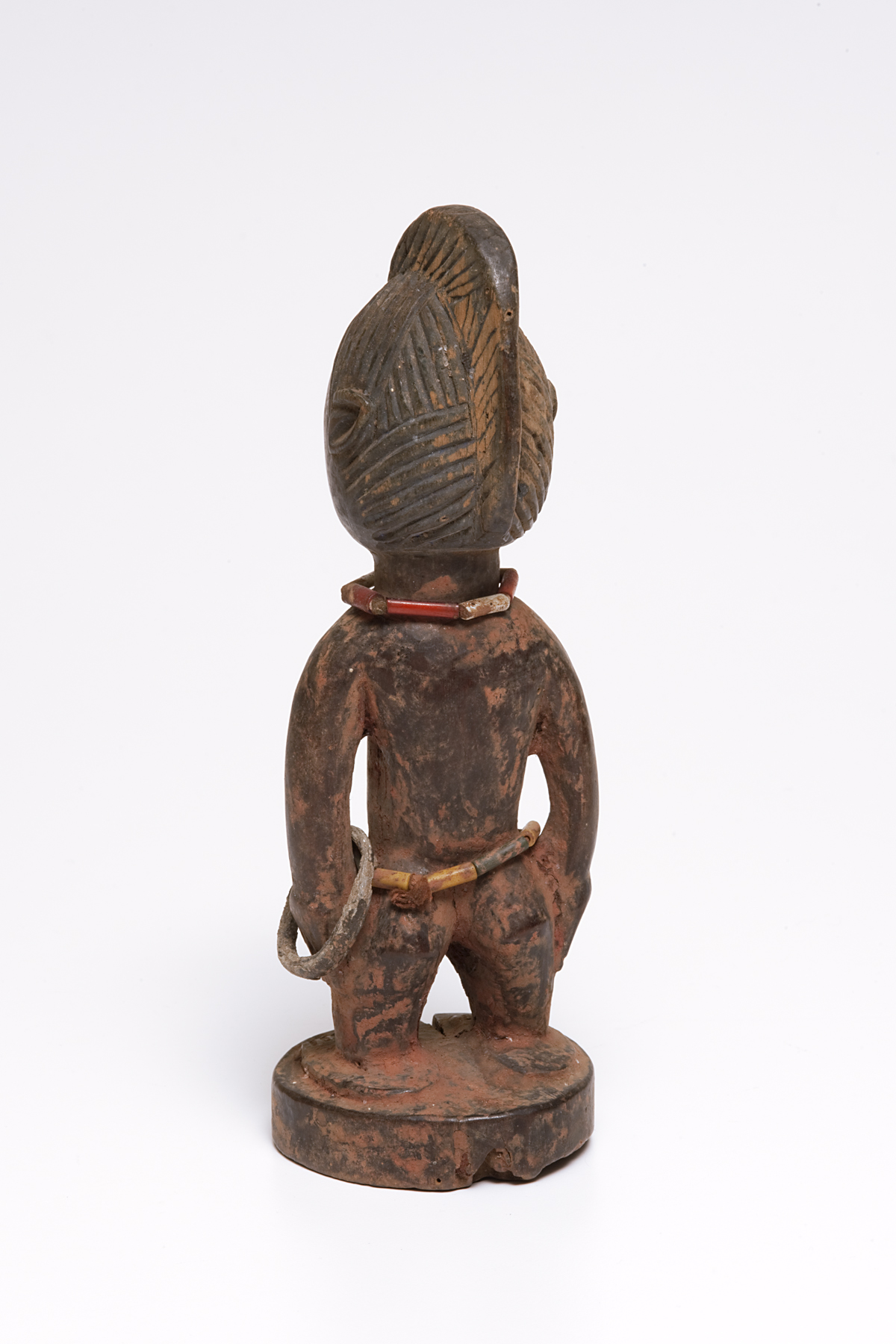ere ibeji (twin figure), unrecorded Yoruba artist
Artwork Overview
unrecorded Yoruba artist, artist
ere ibeji (twin figure),
late 1800s–1993
Where object was made: Nigeria
Material/technique: beads; metal; carving; wood
Dimensions:
Object Height/Width/Depth (Height x Width x Depth): 23 x 8 x 8.5 cm
Object Height/Width/Depth (Height x Width x Depth): 9 1/16 x 3 1/8 x 3 3/8 in
Object Height/Width/Depth (Height x Width x Depth): 23 x 8 x 8.5 cm
Object Height/Width/Depth (Height x Width x Depth): 9 1/16 x 3 1/8 x 3 3/8 in
Credit line: Gift from the Menninger Foundation
Accession number: 2007.2721
Not on display
If you wish to reproduce this image, please submit an image request








